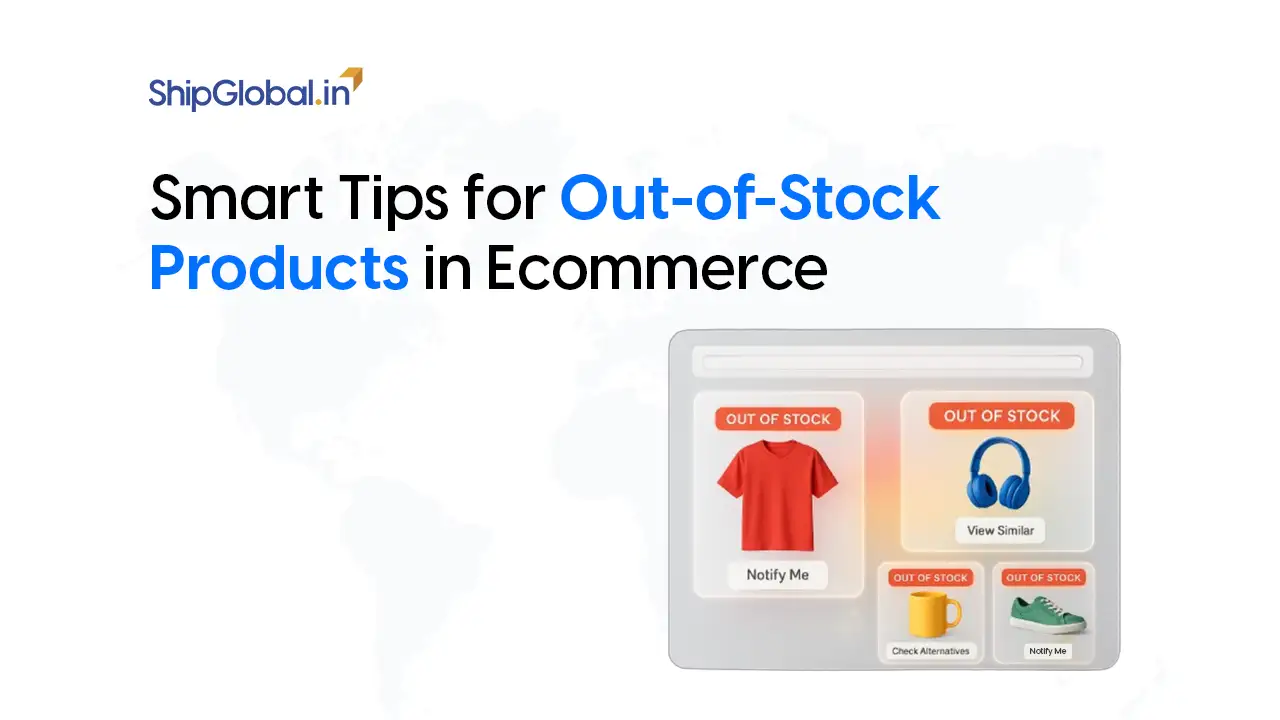Imagine an American family enjoying a warm plate of Dal Makhani with Basmati Rice, or an Indian expat in New York savoring homemade Achar and Parathas—all because you made it possible!
Indian food is taking over the global market, with spices, snacks, and ready-to-eat meals becoming household staples in the USA. With more than 4 million Indian-Americans and a growing interest in ethnic cuisines, demand for authentic Indian food products has skyrocketed.
Did you know?
In 2023-24, India’s exports reached USD 778.21 billion, and food products make up a significant portion. More sellers are now looking to sell Indian food on Amazon USA and through their own Shopify stores. But entering the market isn’t just about listing products—you need to understand FDA approvals, packaging rules, customs clearance, and marketing strategies.
If you want to tap into this massive opportunity, this guide will walk you through how to start selling Indian food products in the USA, step by step.
Here’s what we’ll cover:
- How to get FDA approval for food export to the USA
- Packaging and labeling requirements for the US food market
- Amazon FBA vs. Shopify – Which is better?
- Customs clearance for Indian food exports
- Cost of shipping Indian food to USA buyers
- How to market Indian food products online in the USA
Let’s dive in!
Step 1: Choose the Right Indian Food Products for the USA Market
Not all Indian food products can be exported due to FDA regulations, shelf life, and demand. Choosing the right items will increase your chances of success.
Best Selling Indian Food Products in the USA
- Indian Spices and Masalas – Turmeric, Cumin, Cardamom, Garam Masala
- Ready to Eat Meals – Biryani Mix, Dal Makhani, Paneer Butter Masala
- Flours and Grains – Basmati Rice, Wheat Flour, Millet Flour
- Pickles and Chutneys – Mango Pickle, Lime Pickle, Garlic Chutney
- Dry Snacks and Namkeens – Khakhra, Bhujia, Banana Chips
- Sweets and Desserts – Gulab Jamun Mix, Rasgulla, Jalebi Mix
- Beverages – Masala Chai, Ayurvedic Herbal Teas
Pro Tips:
- Avoid perishable items like dairy products or fresh sweets.
- Choose products with a long shelf life (6+ months).
- Use vacuum-sealed packaging to keep products fresh and meet US food safety standards.
Step 2: Get FDA Approval and Comply with US Food Regulations
Before you export your Indian food products in the US, they must fully comply with FDA regulations and US food import laws. The U.S. Food and Drug Administration (FDA) plays a crucial role in ensuring food safety, and failure to meet its standards can result in shipment delays, product recalls, or even bans. Here’s what you need to do to navigate the regulatory landscape effectively and position your brand for success.
How to Get FDA Approval for Food Export to the USA
Register Your Facility with the FDA
If you manufacture, process, pack, or store food intended for the US market, you must register your facility with the FDA before selling. This registration is mandatory for both domestic and foreign food facilities and must be renewed every two years. Without it, your products may be denied entry into the US.
Follow the Food Safety Modernization Act (FSMA) Guidelines
The FSMA shifts the focus from responding to food safety issues to preventing them. Businesses must implement a Hazard Analysis and Risk-Based Preventive Controls (HARPC) plan to identify potential risks and establish preventive measures. You must also designate a Qualified Individual to oversee and maintain compliance with food safety protocols.
Ensure Proper Labeling and Nutritional Compliance
The FDA enforces strict labeling requirements to ensure consumers receive accurate information about food products. To meet these standards, your packaging must include:
- A clear product name
- A complete ingredient list in descending order by weight
- Allergen warnings (e.g., nuts, dairy, gluten)
- A Nutrition Facts Panel compliant with FDA guidelines
- Net quantity and weight
- Manufacturer or distributor contact information
Additionally, if your product makes claims such as “organic,” “gluten-free,” or “non-GMO,” these must meet specific FDA and USDA guidelines.
Appoint a US-Based Agent
Foreign manufacturers must designate a US-based agent to act as a communication point between their business and the FDA. This representative assists with regulatory processes, ensuring your compliance efforts run smoothly.
Submit a Prior Notice of Importation
Before your shipment arrives in the US, you must submit a Prior Notice of Importation through the FDA Prior Notice System Interface (PNSI). This notification helps the FDA track food imports and conduct necessary safety inspections.
Comply with USDA Regulations (if applicable)
If your product contains meat, poultry, or egg products, it falls under the jurisdiction of the US Department of Agriculture (USDA) in addition to the FDA. The Food Safety and Inspection Service (FSIS) ensures that these products meet stringent safety and labeling requirements.
Prepare for FDA Inspections and Testing
The FDA has the authority to inspect imported food products upon arrival. If your shipment fails to meet safety or labeling standards, it may be detained, recalled, or rejected—leading to financial losses and reputational damage. Conducting internal quality control checks before shipping can help prevent these issues.
Use Only FDA-Approved Ingredients
To avoid additional scrutiny, ensure all ingredients in your product are on the FDA’s Generally Recognized as Safe (GRAS) list. Using unapproved additives or preservatives may result in non-compliance, delaying your entry into the market.
Packaging and Labeling Requirements for the US Food Market
All food packages must include:
Ingredients List (in English)
Expiry Date and Nutritional Info
Manufacturer Details and Allergen Warnings
Pro Tip:
Non-compliant products can be banned or fined in the USA. Work with an export specialist to avoid mistakes.
Step 3: Where to Sell – Amazon USA or Shopify
Now comes the big decision—should you sell on Amazon USA or Shopify?
Option 1: Selling Indian Food on Amazon USA
Amazon USA is the easiest and fastest way to start selling.
Why Choose Amazon
Massive customer base – Millions of people search for Indian food.
Amazon FBA for Indian food products in the USA – Amazon handles shipping and returns.
Built-in advertising tools – Boost sales easily.
How to Sell Indian Food on Amazon USA (Step-by-Step Guide)
- Create an Amazon Seller Account – Sign up on Amazon Seller Central and choose the Professional Plan ($39.99/month).
- List Your Products – Upload high-quality images and descriptions with keywords like Buy Indian Spices Online USA.
Choose Fulfillment Method:
- FBA (Fulfillment by Amazon) – Amazon stores and ships your products. (Recommended)
- FBM (Fulfillment by Merchant) – You handle storage and shipping.
- Ship Your Products to Amazon Warehouses – Use ShipGlobal, FedEx, or DHL.
- Run Amazon Ads and Promotions – Use Amazon PPC ads to increase visibility.
Pro Tip:
Use FBA for Indian food products in the USA to reduce shipping costs and make selling hassle-free!
Option 2: Selling Indian Food via Shopify USA
If you want full control over your brand and higher profits, Shopify is the best choice.
Why Choose Shopify
- Build your own brand – No competition from other sellers.
- No Amazon fees – Keep 100% of profits.
- Freedom in marketing and pricing – Set your own rules.
Best Shopify Stores for Selling Indian Groceries in the USA
- Spice Jungle – Focused on premium Indian spices
- The Curry Guy Shop – Specializes in ready-to-cook curry kits
- Desi Basket – Offers a variety of Indian grocery products
Step 4: Customs Clearance and Shipping Indian Food to the USA
Shipping food products requires customs clearance and proper documentation.
Customs Clearance for Indian Food Exports
Get an Importer of Record (IOR) for bulk shipping.
Ensure FDA, FSSAI, and labeling compliance.
Work with customs brokers for smooth clearance.
Cost of Shipping Indian Food to USA Buyers
FBA (Fulfillment by Amazon) – Lower shipping costs.
Direct Shipping – Use ShipGlobal, FedEx, UPS, DHL.
Bulk Shipments – Reduce per-unit shipping costs.
Conclusion: The Best Time to Start Selling is Now
Selling Indian food in the USA is a golden opportunity! Whether you’re targeting Indian expats, health-conscious Americans, or spice lovers, the market is booming.
Follow FDA regulations
Use Amazon FBA for hassle-free shipping
Build a Shopify store for long-term brand growth
Run ads and influencer marketing to drive traffic
If you’ve been waiting for the right time to sell Indian food on Amazon USA, start your Shopify store, or expand your export business, this is it!
With the right approach, you can turn your passion for Indian food into a profitable international business.
Frequently Asked Questions
Yes! FDA registration is mandatory for all food products entering the USA. Without it, your shipment may be rejected at customs.
Your packaging must include:
Ingredients list (in English)
Expiry date and nutritional information
Manufacturer details and allergen warnings
Properly sealed, tamper-proof, and FDA-compliant packaging
Amazon FBA (Fulfillment by Amazon) is the easiest way—you send your stock to Amazon warehouses, and they handle shipping, storage, and customer service. Alternatively, you can use ShipGlobal, FedEx, UPS, or DHL for direct shipping.
Shipping costs vary based on weight, volume, and destination. FBA for Indian food products in the USA can lower costs since Amazon takes care of bulk logistics. For Shopify stores, consider working with courier services that offer competitive international rates.
Use a mix of Facebook and Instagram Ads, Google Shopping Ads, and influencer marketing with Indian food bloggers. If selling via Shopify, write blogs about Indian recipes and spices to boost SEO traffic and attract organic customers.









